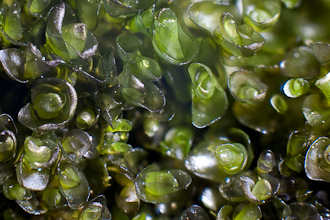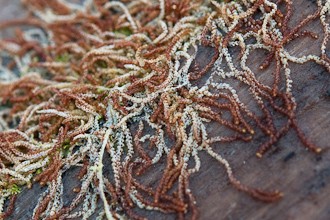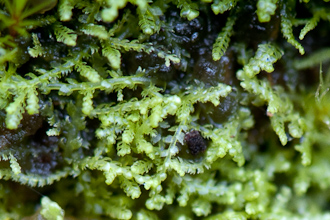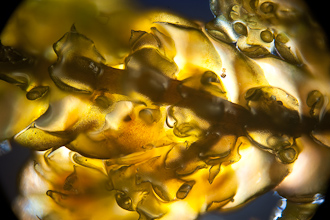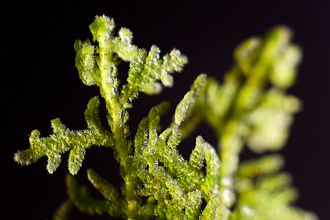
-
Thalloid plant body
-
Plant growth habit
-
Arrangement of the leaves
-
Distichous
Distichous:
With two rows of leaves in one plane. - Three rows of leaves
-
Transverse leaf insertion
Transverse:
With leaves coming off at right angles to the stem. -
Incubous
Incubous:
Leaves overlapping, the forward edge of each leaf lying on top of the back edge of the leaf in front of it. -
Succubous
Succubous:
Leaves overlapping, the upper part of each leaf covered by the base of the next higher one. - Leaves widely-spaced along length of shoot
-
Reproductive structures
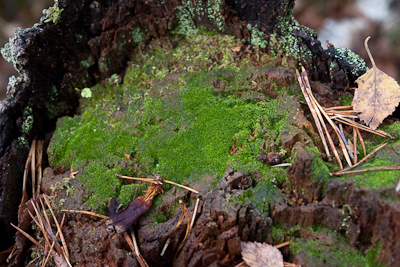
Some liverworts are extremely small, such as the patch of Riccardia palmata colonising this tree stump in a wood east of Alford in Aberdeenshire.
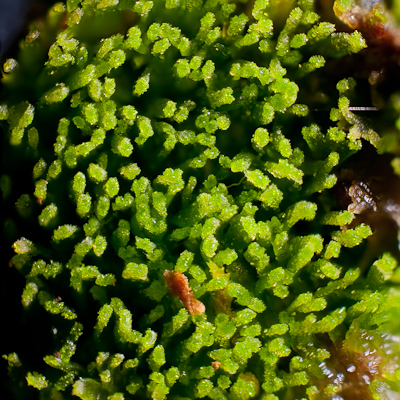
Under the lens the individual shoots become apparent, but to the naked eye the green patch on the stump could be mistaken for a green algal community.
While the range of structures in liverwort leaves is less varied than that of mosses, in particular there's never any development of a costa or nerve, the outline of leafy liverwort leaves shows great diversity. In some species there's relatively wide lobes or narrower finger-like projections, others have sharp-pointed cusps or notches. Finer features include spine-like protrusions, teeth and hairlike fringes.
Another area where liverworts "excel" in terms of morphological diversity is in the range of form in underleaves and lobules.
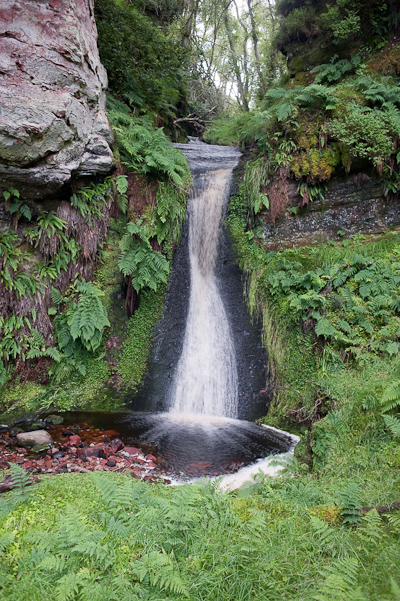
Here's a typical Scottish habitat where bryophytes will be found in some abundance. The damp crevices in the rocks may be home to leafy liverworts while flat areas of rock close to the water are likely niches for thallose liverworts. Boquhan Burn, near Kippen, Stirlingshire.
- Jungermannia excertifolia
- Lophocolea bidentata
- Nowellia curvifolia
- Bazzania trilobata
- Barbilophozia spp.
- Lepidozia reptans
- Bazzania trilobata
- Calypogeia fissa
- Calypogeia muellerana
- Frullania dilatata
- Frullania tamarisci
- Porella cordeana
- Diplophyllum albicans
- Frullania dilatata
- Frullania tamarisci
- Porella cordeana
- Radula complanata
- Scapania nemorea
- Plagiochila spinulosa
